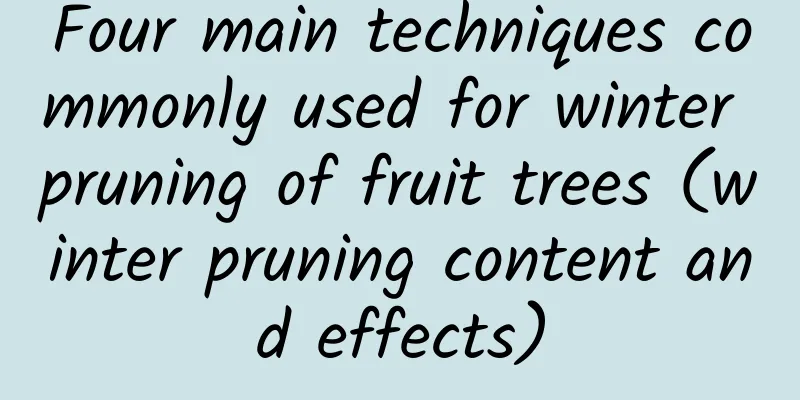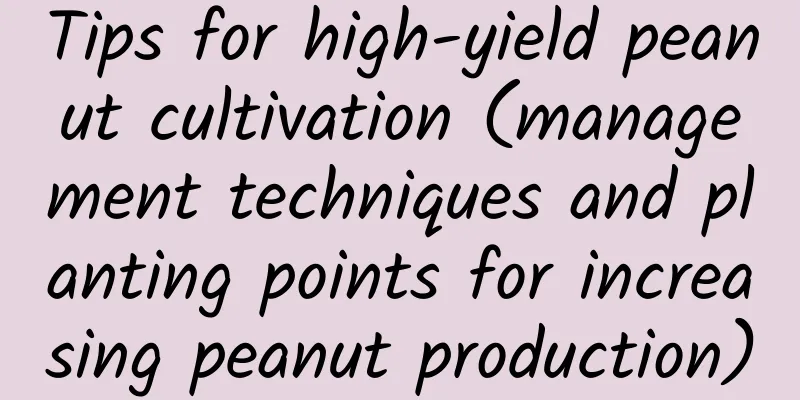Four main techniques commonly used for winter pruning of fruit trees (winter pruning content and effects)

1. When is the best time to prune fruit trees in winter?Generally speaking, the best time to prune fruit trees in winter is in late autumn and early winter, or in late winter and early spring, that is, avoid the period with the lowest temperature in winter. These two periods of winter pruning each have their own advantages, and it is difficult to say which period is the best, because this depends on factors such as the type of fruit tree, variety, geographical environment and the health of the tree. For example, for deciduous fruit trees in the north, people often choose to prune them in late autumn and early winter after the fruits are harvested and the leaves fall, in order to achieve the purpose of early pruning, early garden cleaning, early storage, and early pest control. In some places in the south, people usually choose to prune deciduous fruit trees in late winter and early spring to ensure that the wounds heal quickly, avoid frost damage, prevent them from drying up, and promote vigorous growth. Therefore, each has its own advantages. 2. What are the pruning techniques for fruit trees?There is a folk saying that goes, "The tree is the touchstone of whether the pruning method is correct." This shows that fruit tree pruning requires careful pruning techniques, not blind pruning. There must be sufficient reasons for each pruning. Therefore, when pruning, you must make accurate judgments and prune reasonably based on the tree's condition. There are many pruning techniques for fruit trees. Usually there are sprout removal, pinching, short pruning, thinning, retracting, slow release, branch bending, and tip twisting . Among them, the most commonly used winter pruning techniques are short pruning, thinning, retracting, and slow release. Here, let's list a few. 1. ThinningThinning refers to a method of cutting or sawing off annual or perennial branches from the base, and is also the most frequently used pruning technique in fruit tree pruning. It is mainly used to prune dry, diseased and weak branches, densely overlapping branches and crossed branches. The purpose is to improve the state of over-dense and over-vigorous branches and leaves, and make them receive light evenly and be open and ventilated, which can not only promote photosynthesis, but also reduce the occurrence of diseases and pests. 2. ShortenShortening refers to the pruning technique of cutting off part of the annual branches to promote the growth of new shoots. Its purpose is to promote the growth of more robust new shoots, reduce the branching position, promote the growth of medium and short fruit branches, and at the same time play a role in controlling the crown and slowing down the tree's vigor . This is mainly to promote the growth of more new branches, increase fruit tree yields, and make picking easier in the future. Shortening can be divided into light shortening, medium shortening, heavy shortening and extremely heavy shortening according to the degree of pruning, that is, shorting by 1/3, 1/2 of the branch, retaining 2 to 3 buds and pruning the base. When pruning, the more severe the degree of pruning, the fewer new shoots will grow, but they will be thicker and longer; the lighter the degree of pruning, the more new shoots will grow on this branch, but they will be shorter. For example, very heavy pruning, because it is pruned from the base of the branch , only promotes the growth of 1-2 small branches, but they are thick and long. Light pruning, because it only cuts off 1/3 of the annual branch, the uncut part will sprout more short branches from top to bottom . 3. RetractionPruning, also known as reduction, is a pruning technique that shortens perennial branches. Its main purpose is to improve the phenomenon of old branches stretching too long, resulting in loose crowns and outward-moving fruiting parts, making the tree strong outside and weak inside. To put it simply, it means making the crown more compact through back pruning, so as to control the growth of the crown and beautify the shape of the tree. 4. Slow down Slow release is also called long release. It means that the one-year-old branches are not pruned for the time being and allowed to grow naturally. Its main purpose is to increase the number of budding trees, cultivate more medium and short branches, and promote flowering and fruiting. But it is not suitable for those vigorous and long branches, upright branches and competing branches, but is more suitable for drooping branches, horizontal branches and oblique branches. |
Recommend
How to prune roses
Pruning time After frost After the frost has pass...
Coral cherry cultivation methods and precautions
Coral cherry is generally strong and easy to main...
How long does it take for Allen leaf cuttings to germinate
How long does it take for Allen leaf cuttings to ...
How often should I water my jade tree?
How often should I water my jade tree? Spring is ...
Is the five-color plum poisonous?
Is it poisonous? There was once a pot of five-col...
What to do if asparagus fern grows wildly
Reasons for the crazy growth The "crazy grow...
How to grow more lateral buds on the money tree
1. Cut off the head to produce side shoots It is ...
Tulip Flower Language
1. Flower Language There are many meanings of tul...
When is the best time to transplant chrysanthemums?
When transplanting chrysanthemums, pay attention ...
How to grow nasturtium in spring
1. Appropriate amount of water The growth rate is...
Does the maidenhair fern prefer shade or sun?
Does the maidenhair fern prefer shade or sun? The...
How to grow coix seeds and what to pay attention to
1. Soil The soil can generally be prepared by you...
Cutting propagation of red lotus
Cutting propagation of red lotus Seedling environ...
The correct breeding method of yellow bone fish
Yellow bone fish, also known as yellow catfish , ...
How to grow ivy quickly
1. Soil and repotting If you want the plants to g...









